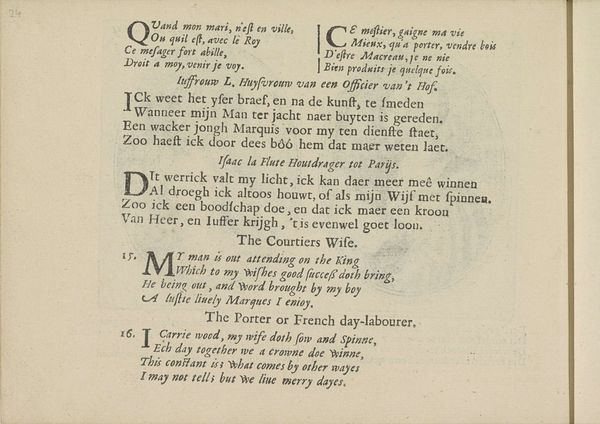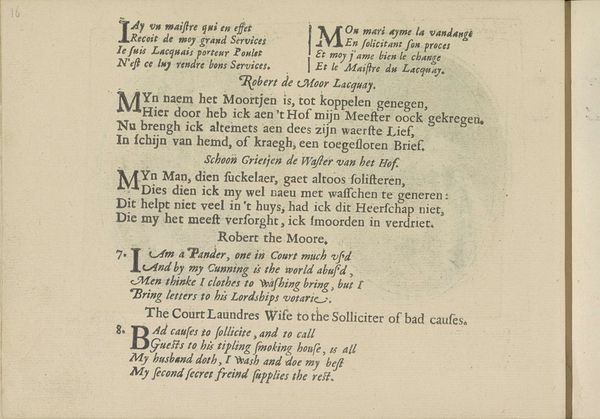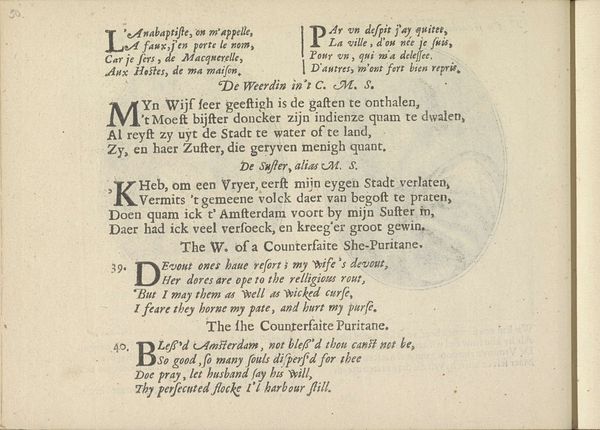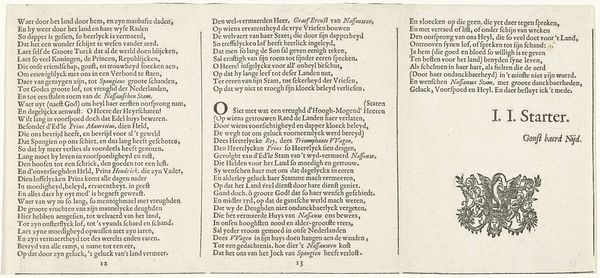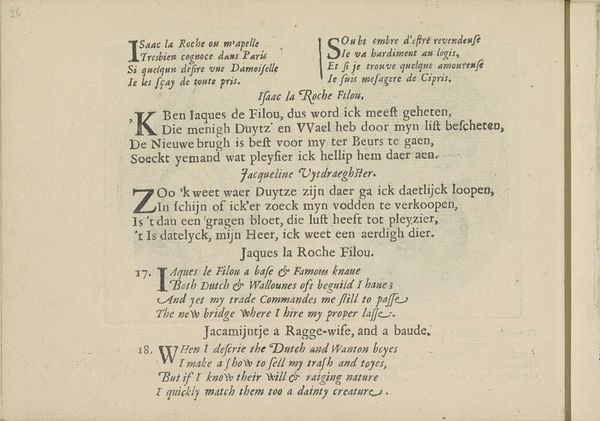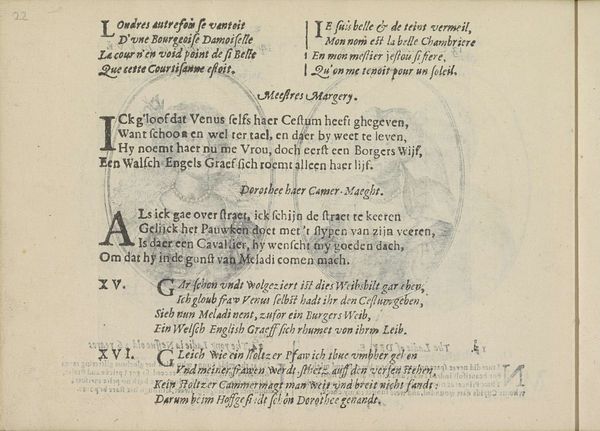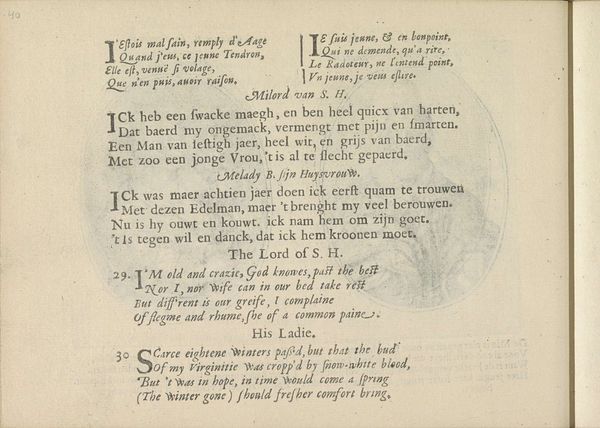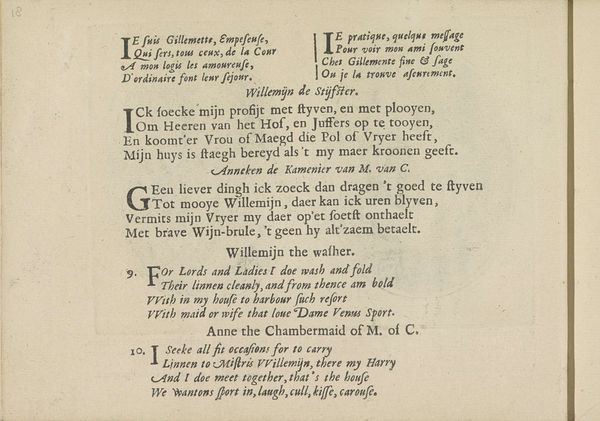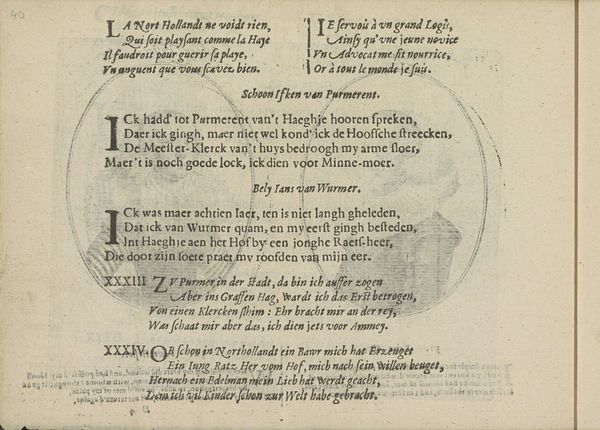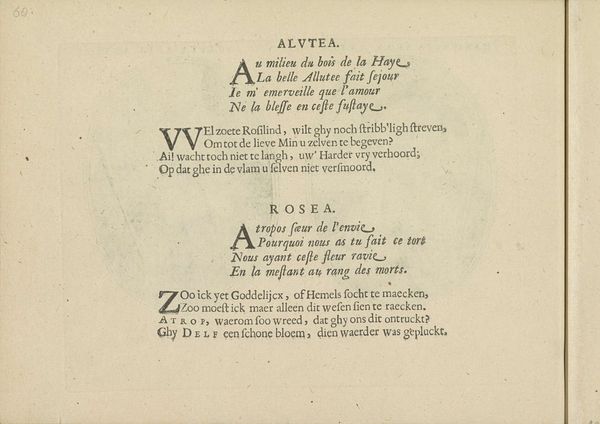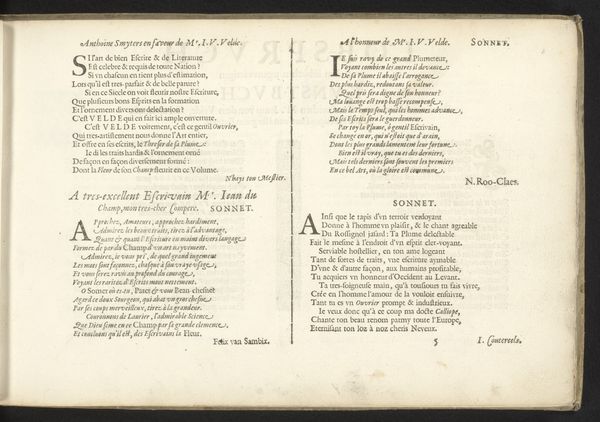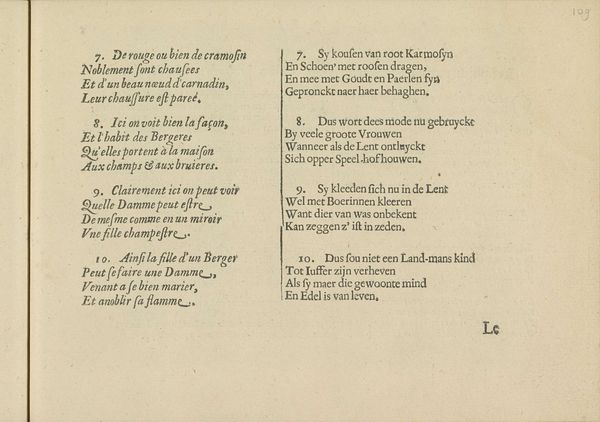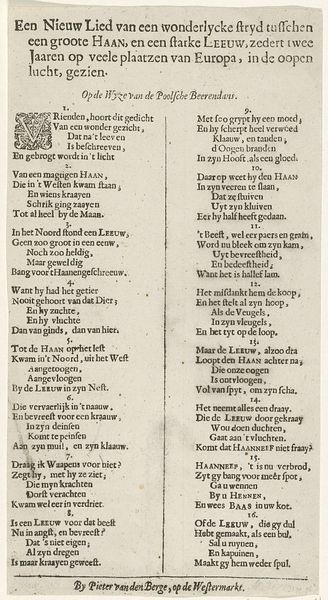
Kwatrijnen bij voorstellingen van een koopman uit Amsterdam en zijn vrouw 1641
0:00
0:00
graphic-art, print, textile, engraving
#
portrait
#
graphic-art
#
baroque
#
dutch-golden-age
# print
#
textile
#
genre-painting
#
engraving
Dimensions: height 140 mm, width 190 mm
Copyright: Rijks Museum: Open Domain
Curator: This striking 17th-century engraving, titled "Kwatrijnen bij voorstellingen van een koopman uit Amsterdam en zijn vrouw," was created around 1641 by Crispijn van de Passe the Younger. My initial impression is a complex visual puzzle – the strong vertical orientation creates distinct visual sections. Editor: I'm struck by the textual weight. The lettering dominates the composition, creating a palpable sense of somber reflection, a bit dark. Curator: Yes, van de Passe, working during the Dutch Golden Age, cleverly integrates text and image. It appears like excerpts from poems. Editor: Precisely, look how the bold font, stark against the plain page, emphasizes the weight of these printed pronouncements and perhaps the intent to instruct. What's the historical reading here? Curator: This engraving gives insight into the social fabric of Amsterdam during that time. It's part of a tradition where printed portraits were often accompanied by verses commenting on the subjects’ lives, morality, and social standing. Editor: So, these texts functioned almost like social media posts, commenting on the reputation and moral standing of individuals, like the Amsterdam merchant. This print reveals how printed images could enforce civic behaviors or create communal memory. Curator: Quite so! We also observe, purely formally, the stark contrast between light and shadow, an example of engraving techniques highlighting textures—the textile even feels three-dimensional—that the original artist wished to transmit. Editor: Right. By drawing out and analyzing such stylistic techniques, one can better discern the role such elements played in influencing an early modern audience. I now read this as less 'dark', but complex in structure with varying degrees of visual emphasis. Curator: It becomes clearer that this graphic print offered far more than simply the visages of an Amsterdam merchant and his wife. It represents, perhaps even preserves, the essence of that specific culture's norms and societal anxieties, neatly inscribed on paper.
Comments
No comments
Be the first to comment and join the conversation on the ultimate creative platform.
